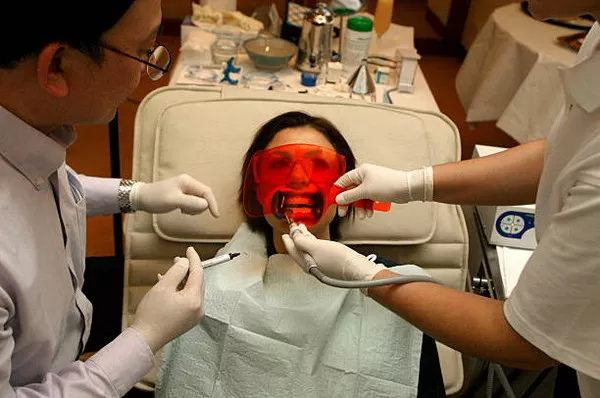Teeth whitening has become a popular cosmetic procedure, with over-the-counter (OTC) whitening strips being a common choice for many seeking a brighter smile. However, one frequently encountered side effect of these products is tooth sensitivity. This article delves into the duration of sensitivity following the use of whitening strips, the causes behind this discomfort, and practical tips to manage it effectively.
Duration of Sensitivity
Tooth sensitivity after teeth whitening is common and usually lasts 24 to 48 hours. Immediate sensitivity typically subsides within this timeframe after the whitening treatment. This temporary discomfort is part of the whitening process for many users, as the active ingredients in the strips penetrate the enamel to break down stains.
While the sensitivity is typically short-lived, some users may experience discomfort for a few days. It is essential to understand that this is generally a temporary condition and part of the whitening journey. However, prolonged sensitivity beyond this window should prompt a consultation with a dental professional to ensure there are no underlying issues.
Causes of Sensitivity
Why do teeth become sensitive after whitening? The primary culprits are the ingredients used in whitening products, particularly carbamide peroxide and hydrogen peroxide. These compounds play a crucial role in achieving the desired whitening effect but can also lead to sensitivity.
Chemical Reaction with Chromogens: The whitening agents create a chemical reaction with chromogens on the teeth, which are pigmented molecules that cause discoloration. This reaction breaks down the chromogens, resulting in a lighter tooth shade. However, this process can temporarily increase tooth sensitivity.
Pulp or Nerve Inflammation: Exposure to peroxides can sometimes cause inflammation of the pulp or nerve inside the tooth. The enamel, which is the outer protective layer, is slightly porous and allows the peroxides to reach the underlying dentin and pulp. This interaction can lead to inflammation and subsequent sensitivity.
see also: Do white strips damage teeth?
Tips to Manage Sensitivity
Managing tooth sensitivity effectively can enhance the overall experience of teeth whitening. Here are some practical strategies:
Use Lower Concentrations
One of the most effective ways to manage sensitivity is to use a lower concentration of the whitening agent. Over-the-counter (OTC) whitening strips typically contain hydrogen peroxide concentrations ranging from 5.3% to 6.5%. While these concentrations are generally safe for home use, they can still cause sensitivity in some users. Dental providers, on the other hand, may use products with carbamide peroxide at higher strengths, ranging from 10% to 45%.
By opting for products with lower peroxide concentrations, users can reduce the risk and severity of sensitivity. It’s a trade-off between the speed of whitening and comfort, and those with sensitive teeth may find it beneficial to choose products with lower peroxide levels.
Proper Tray Usage
If you are using an at-home whitening tray, following the manufacturer’s instructions closely is crucial. Proper placement of the whitening gel in the tray can prevent excessive contact with the gums and reduce the risk of sensitivity.
Here are some specific tips:
Do not overfill the tray: Excessive gel can ooze out and irritate the gums, causing sensitivity.
Ensure a snug fit: A well-fitted tray ensures even distribution of the whitening agent and minimizes contact with soft tissues.
Follow the recommended duration: Avoid leaving the trays on for longer than recommended. Prolonged exposure can increase sensitivity without significantly improving results.
Consult Your Dentist
Before embarking on a whitening regimen, consult your dental provider. Dentists can guide patients in choosing the right whitening product, tailoring it to individual needs and sensitivity levels. They can also offer professional-grade alternatives that might be more effective and less irritating.
If sensitivity persists beyond a few days, it’s essential to consult your dentist to discuss potential solutions. Prolonged sensitivity might indicate an underlying dental issue that needs addressing.
Additional Strategies to Mitigate Sensitivity
Beyond the primary strategies, several additional measures can help manage sensitivity effectively:
Use Desensitizing Toothpaste
Desensitizing toothpaste can be highly effective in reducing tooth sensitivity. These toothpastes contain compounds such as potassium nitrate and stannous fluoride, which help block pain signals from the nerve to the brain. Incorporating a desensitizing toothpaste into your daily oral care routine before, during, and after whitening treatments can mitigate sensitivity.
Take Breaks Between Treatments
If using whitening strips as part of a multi-day regimen, consider taking breaks between applications. This gives your teeth a chance to recover and reduces the cumulative impact of the whitening agents.
Avoid Acidic Foods and Beverages
During the whitening period, try to avoid acidic foods and beverages, such as citrus fruits, sodas, and wine. Acids can further irritate sensitive teeth and exacerbate discomfort. Opt for a diet that is gentle on your teeth to minimize additional sensitivity.
Maintain Good Oral Hygiene
Good oral hygiene is fundamental to reducing sensitivity. Brushing and flossing regularly helps maintain the health of your teeth and gums, which can reduce the likelihood of sensitivity. However, be gentle when brushing to avoid irritating sensitive areas.
Use Fluoride Treatments
Fluoride treatments can help strengthen tooth enamel and reduce sensitivity. Over-the-counter fluoride rinses are available, or your dentist can provide a professional fluoride treatment for more significant results.
Monitor for Allergic Reactions
In rare cases, sensitivity might be due to an allergic reaction to the whitening product. If you experience unusual symptoms such as severe pain, swelling, or rash, discontinue use immediately and consult a healthcare professional.
see also: What is the cheapest way to whiten your teeth?
The Role of Enamel and Dentin in Sensitivity
Understanding the structure of your teeth can shed light on why whitening strips cause sensitivity. The outer layer of the tooth is enamel, a hard, protective layer. Beneath the enamel lies dentin, which is softer and more porous.
The active ingredients in whitening strips, primarily hydrogen peroxide and carbamide peroxide, penetrate the enamel to reach the dentin. This penetration is necessary for breaking down stains but also makes the dentin, which is directly connected to the nerves of the teeth, more sensitive.
When the whitening agents reach the dentin, they can cause transient inflammation of the dental pulp, where the nerves are located. This inflammation is what leads to the sensation of sensitivity.
Choosing the Right Whitening Product
With a myriad of whitening products available, selecting the right one can be daunting. Here are some factors to consider:
Evaluate Ingredients and Concentrations
Look at the active ingredients and their concentrations. As mentioned, lower concentrations of peroxide can reduce sensitivity.
Consider the Form of the Product
Whitening products come in various forms, including strips, gels, trays, and toothpaste. Each form has its advantages and potential downsides in terms of effectiveness and sensitivity. Strips and trays are often more potent but can cause more sensitivity, while toothpaste and gels may be gentler.
Read Reviews and Seek Recommendations
Reviews from other users can provide insight into the effectiveness and potential sensitivity caused by different products. Additionally, recommendations from your dentist or dental hygienist can guide you to reliable options.
When to Seek Professional Help
While mild to moderate sensitivity is normal, there are times when professional intervention is necessary:
If sensitivity is severe or prolonged: Discomfort that lasts beyond a few days or is particularly intense warrants a dental visit.
If you experience other symptoms: Signs such as swelling, redness, or bleeding gums suggest a reaction that needs professional attention.
If home remedies fail: Persistent sensitivity despite using desensitizing toothpaste, fluoride treatments, and other home measures should be evaluated by a dentist.
Conclusion
Tooth sensitivity following the use of whitening strips is a common and usually temporary side effect. By understanding the duration of sensitivity, the causes behind it, and implementing strategies to manage it, users can achieve a brighter smile without prolonged discomfort. Always consult with a dental professional to tailor the whitening process to your individual needs and ensure the health and safety of your teeth. With the right approach, you can enjoy the benefits of teeth whitening while minimizing any adverse effects.
FAQs about Tooth Sensitivity from Whitening Strips
1. Does tooth sensitivity from whitening strips go away?
Yes, tooth sensitivity from whitening strips is typically temporary and should go away. The sensitivity usually occurs because the whitening agents, such as hydrogen peroxide or carbamide peroxide, penetrate the enamel and reach the dentin, where the nerves are located. This process can cause temporary irritation. Most people find that the sensitivity diminishes within a few days to a week after they stop using the whitening strips. If the sensitivity persists or is particularly severe, it’s a good idea to consult with a dentist.
2. How to stop sensitive teeth pain immediately after whitening?
To stop sensitive teeth pain immediately after whitening, you can try the following methods:
Desensitizing Toothpaste: Use a toothpaste designed for sensitive teeth. These contain ingredients like potassium nitrate or stannous fluoride that help block pain signals from the tooth’s surface to the nerve.
Avoid Triggers: Avoid consuming very hot, cold, or sugary foods and drinks, which can exacerbate sensitivity.
Fluoride Gel or Mouthwash: Apply a fluoride gel or use a fluoride mouthwash to help remineralize the teeth and reduce sensitivity.
Over-the-Counter Pain Relief: Take an over-the-counter pain reliever, such as ibuprofen or acetaminophen, to help manage the discomfort.
Coconut Oil Pulling: Swishing coconut oil in your mouth for 10-15 minutes can help soothe irritated gums and reduce sensitivity.
3. Should I brush my teeth after whitening strips?
Yes, you should brush your teeth after using whitening strips, but do so gently. It’s best to wait at least 30 minutes after removing the strips before brushing. This waiting period allows your teeth to recover from the potential softening of the enamel due to the whitening agents. Use a soft-bristled toothbrush and a fluoride toothpaste to help strengthen your enamel and reduce sensitivity.
4. How to get rid of zingers after whitening?
Zingers, or sharp, sudden pains in your teeth, can occur after whitening. To alleviate them, consider these steps:
Desensitizing Treatments: Apply desensitizing gels or pastes that contain potassium nitrate, which can help calm the nerves inside the teeth.
Fluoride Treatments: Using a fluoride rinse or gel can help strengthen enamel and reduce sensitivity.
Avoid Acidic Foods and Drinks: Steer clear of acidic foods and beverages, like citrus fruits and sodas, which can further irritate sensitive teeth.
Use a Soft-Bristled Toothbrush: Switch to a soft-bristled toothbrush to avoid additional irritation to your teeth and gums.
Consult Your Dentist: If zingers persist, consult your dentist. They may recommend professional treatments, such as fluoride varnishes or desensitizing pastes, which can provide more immediate and longer-lasting relief.
You Might Be Interested In
































